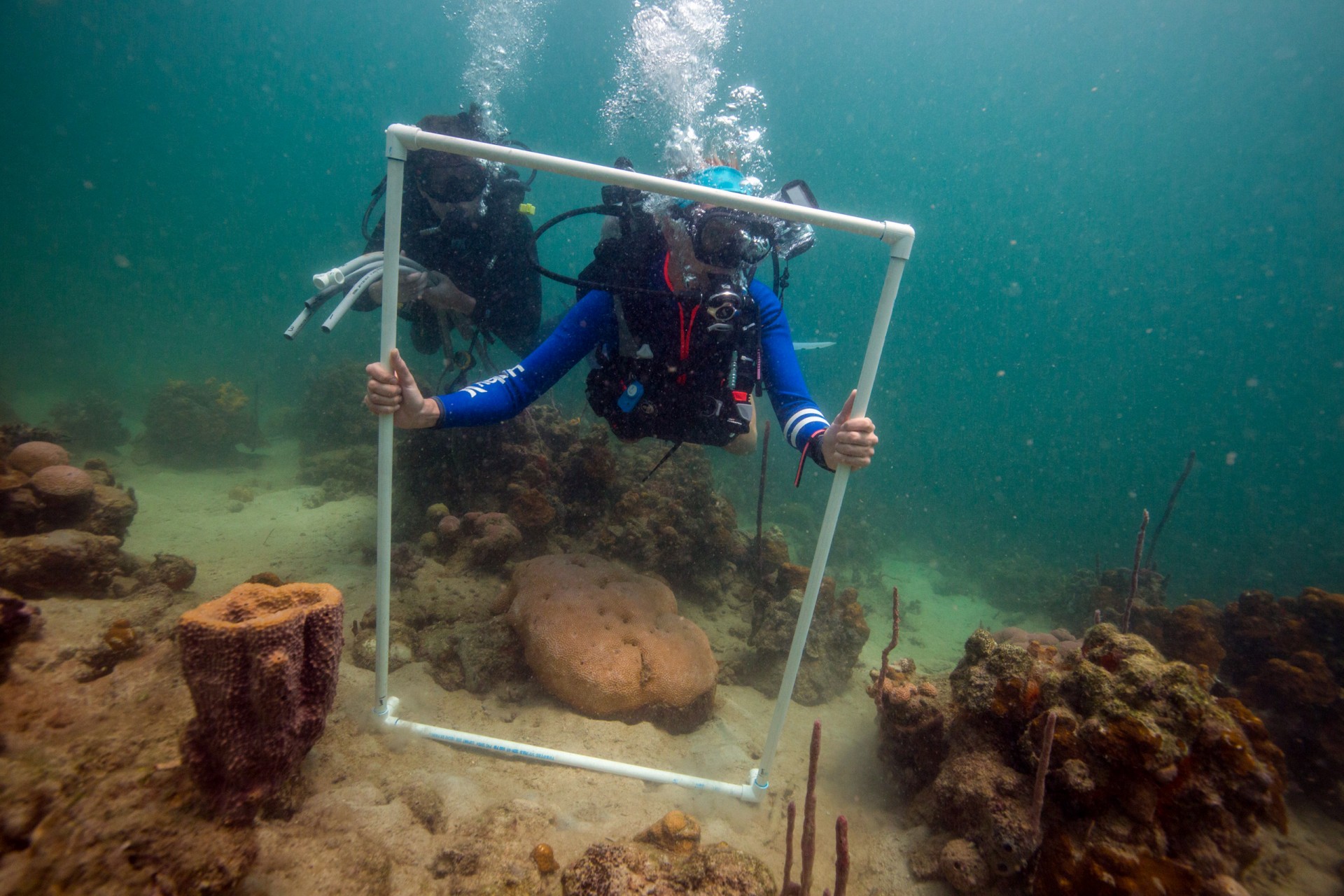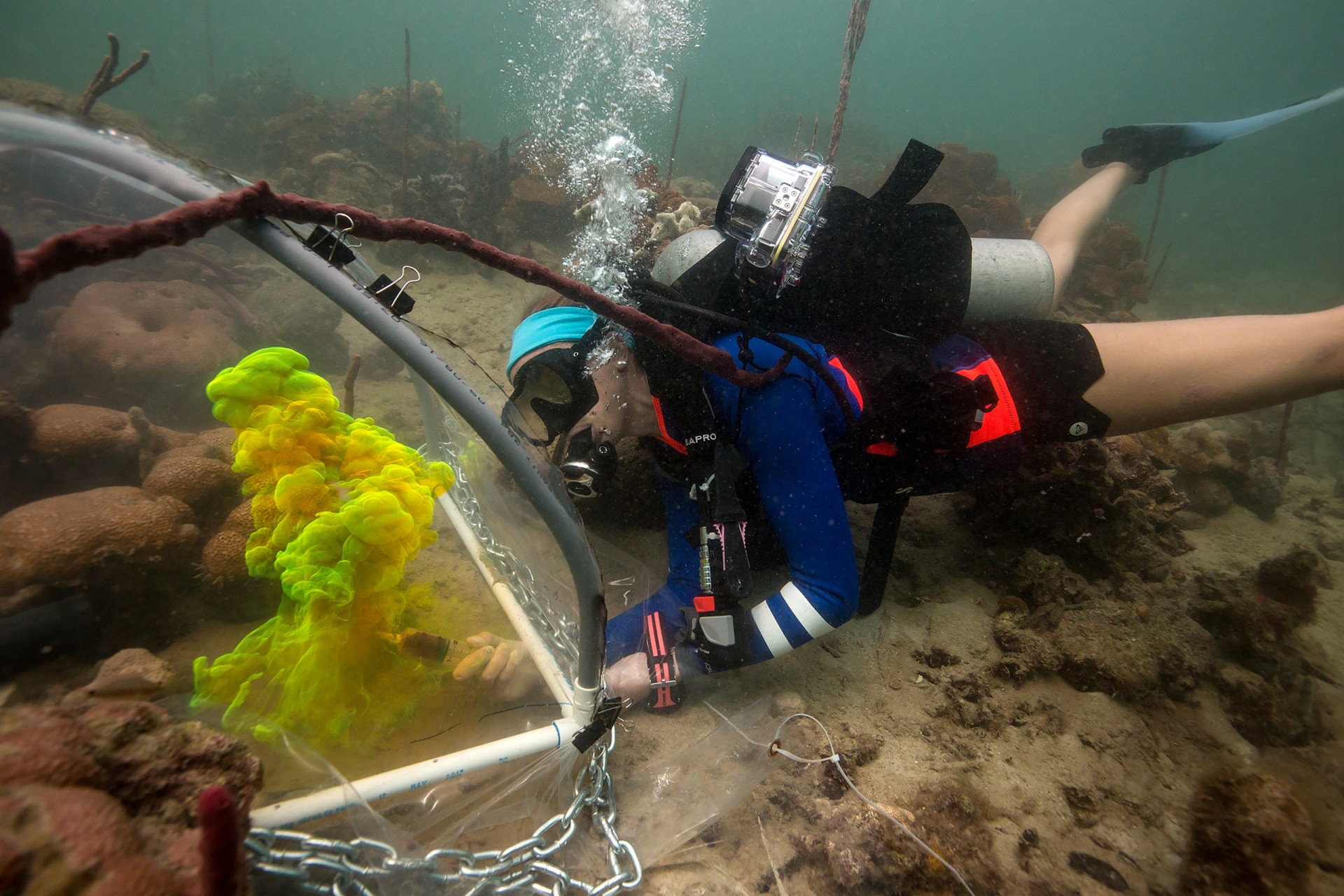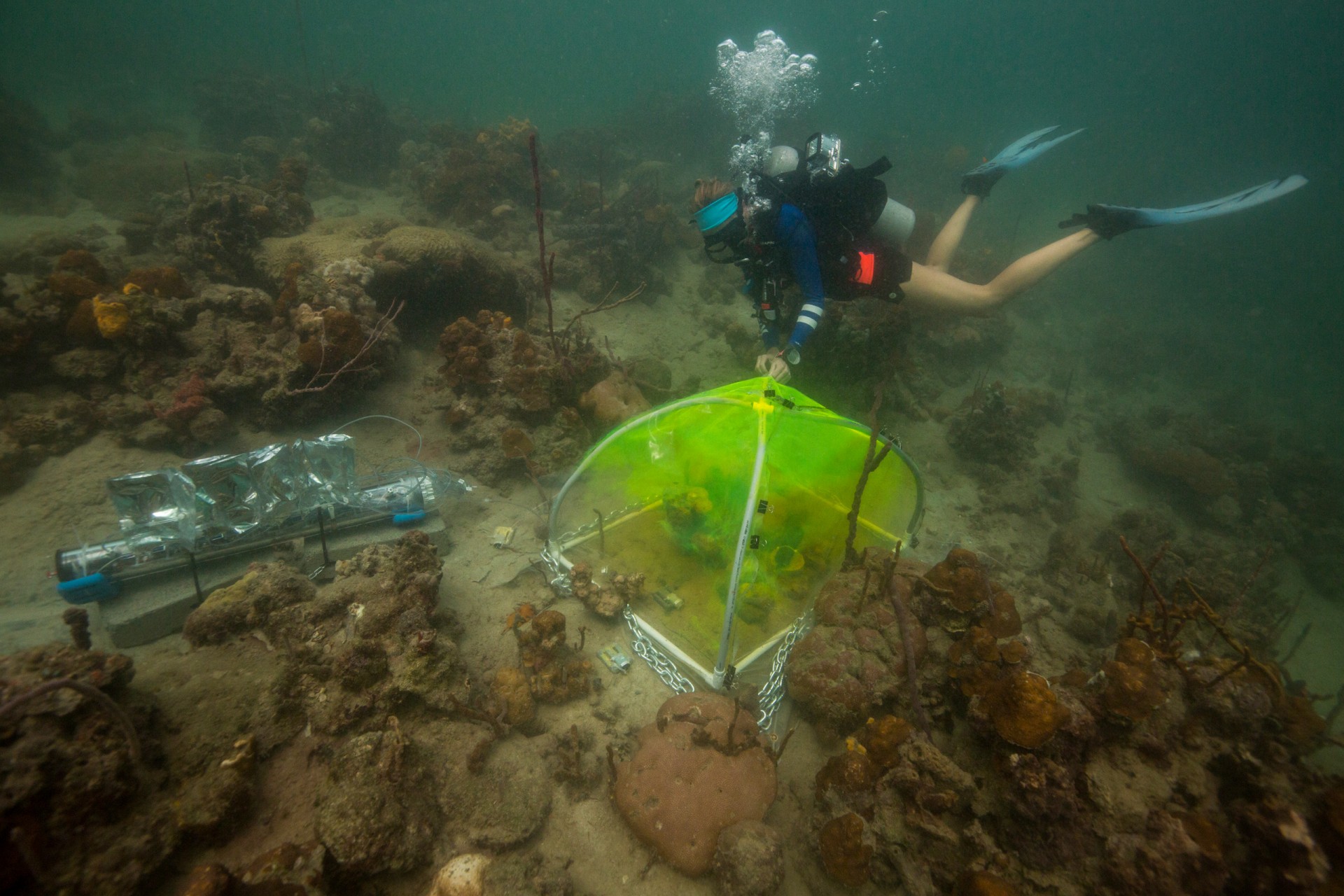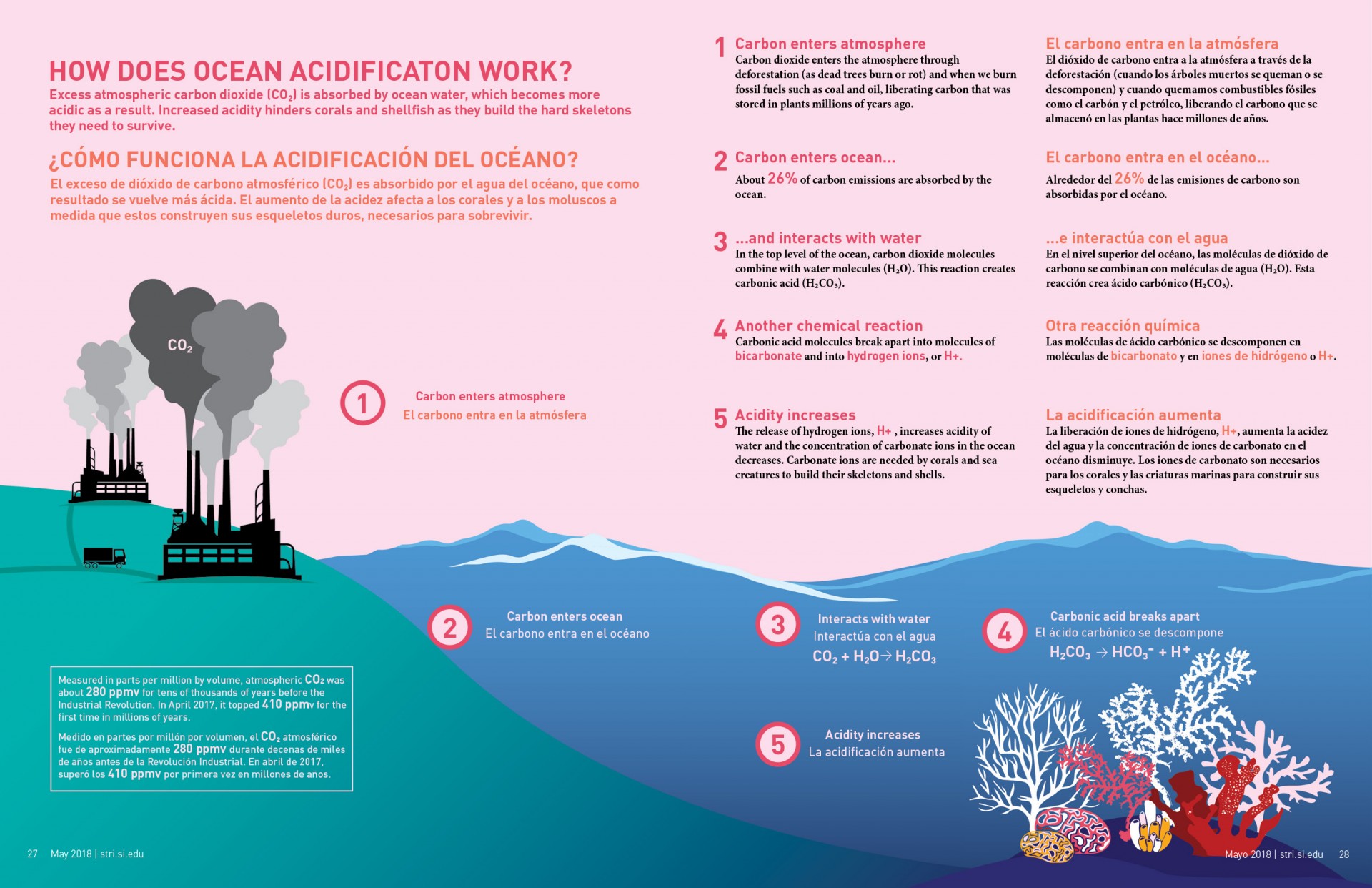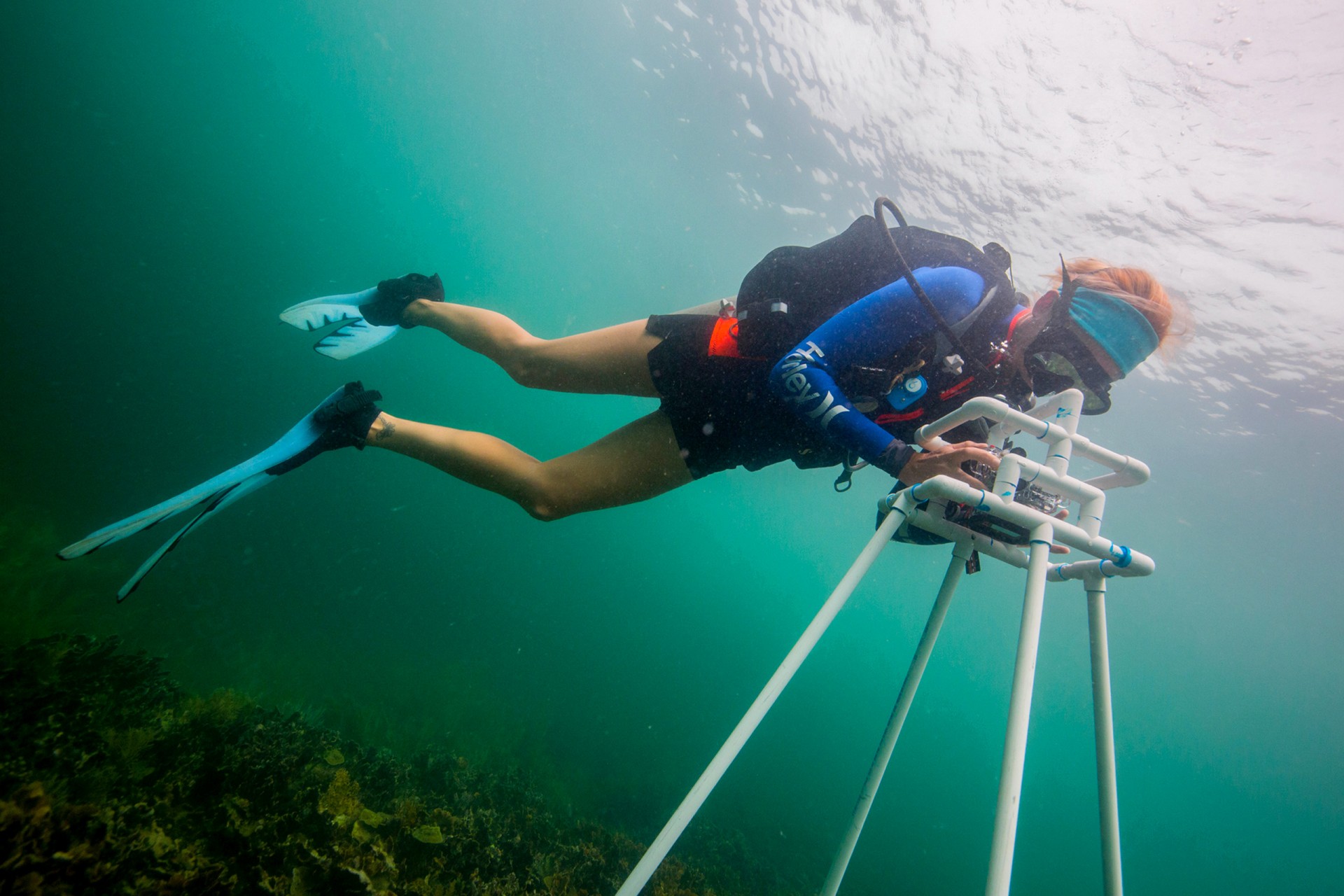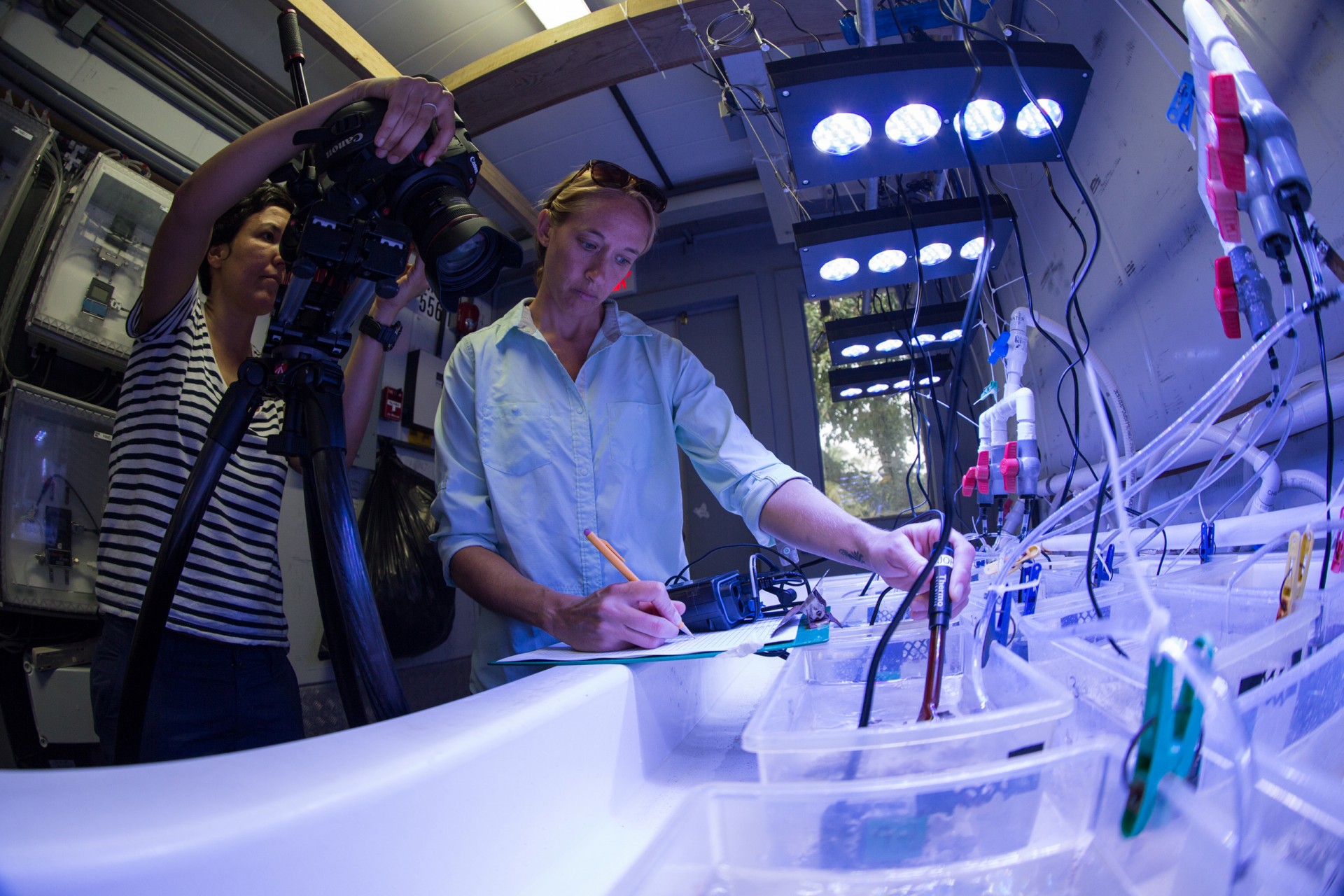Leafcutter ants have blind
spots, just like truck drivers
Ocean
acidification
and reefs
The glue that holds the coral reef together
threatened by global change
Bocas Del Toro, Panama
Rapid increases in ocean acidity puts crustose coralline algae in a growth predicament, research by a Smithsonian marine scientist shows.
Ocean acidification is the world’s biggest chemistry experiment. It’s playing out across 70 percent of the world’s surface and has the potential to profoundly alter global marine ecosystems. Sometimes referred to as “the other CO2 problem” — global warming being the better known one — ocean acidification happens as seawater absorbs carbon dioxide and chemically reacts with it. The resulting uptick in acidity hinders the ability of animals like corals and crustaceans to form the hard skeletons made of calcium carbonate that are essential to their existence.
While much work has been done on acidification’s effects on coral, the fate of a lesser-known organism may be just as crucial to the future of tropical reefs.
Under bright fluorescent LED lights in a laboratory at the Bocas del Toro Research Station on Panama’s Caribbean coast, Maggie Johnson checks the water acidity in plastic tanks holding tiny colonies of slow-growing reef organisms called crustose coralline algae. The water in the tanks mimics future oceanic conditions to address the question of how — or if — these essential organisms, which are crucial for reef-building, will adapt to increasingly acidic oceans.
Coralline algae are an essential component of tropical reef systems. When they colonize an area, they provide a surface for corals to grow on and send chemical cues that tell coral larvae to settle, setting in motion the construction of a habitat that provides homes for about 25 percent of the world’s marine species.
“They glue the reef together,” says Johnson, a postdoctoral fellow with the Smithsonian MarineGEO network. “They play an important ecological role but we don’t know much about how they respond to changes in the environment.”
“For the most part, the future pH reduces coralline growth rates, which has some serious implications for coral reefs,” says Johnson. Her experiments simulate what ocean acidification will be like in 2100 if carbon dioxide emissions from the burning of fossil fuels continues at the business-as-usual scenario. Ocean acidity will have more than doubled since the Industrial Revolution.
Past swings in Earth’s climate have resulted in warmer and more acidic seas that were home to healthy coral reefs. But the current rate of change is new: this level of acidity hasn’t been recorded in the geological record going back some 300 million years. “The problem is not so much the acidification, but the speed at which it’s happening,” says Johnson, who also put the corallines in variable pH conditions that may point to a capacity to adapt. “We may find different populations of corallines that are more resilient but the change is happening so fast that many won’t be able to adapt.”
MarineGEO captures reef change
After completing her Ph.D. at the Scripps Institution of Oceanography, Maggie Johnson joined the Smithsonian as a postdoctoral fellow with the MarineGEO program. She carried out the first phase of her research at the Bocas Del Toro Research Station, on Panama’s Caribbean coast, where she combined lab experiments with more than 100 hours of underwater field research.
With a high-tech water sampling system and some DIY ingenuity involving PVC pipes, transparent plastic sheets, heavy chains and cinderblocks, Johnson and her team measured coral growth rates in watertight tent-like enclosures. They deployed PVC plates around the Bocas lagoons, which they will retrieve later in 2018 to study the diverse reef life that grew on the artificial surfaces. She also established permanent 50-meter transects where she photographed the same spots on different occasions — and documented a strong coral bleaching event in 2017.
“We’ve actually seen some pretty incredible changes in some of the reefs around Bocas in the short time that I’ve been here,” says Johnson. “The next step will be to go back to those plots six months later and see how those corals fared following that bleaching event. Did they die? Did they survive? And what happened to that portion of the reef?”
A graphic on ocean acidification.
Along with making breakthroughs on ocean acidification, Johnson’s work aims to establish baseline data for the MarineGEO network, which researchers will be able to build upon decades into the future. Johnson has already applied some of her protocols to MarineGEO sites in Florida, Belize and Panama’s Coiba National Park, just across the isthmus in the Pacific.
“Maggie developed a fantastic project. It’s both conceptually interesting and relevant to practical threats to reefs,” says Emmett Duffy, the director of the MarineGEO/Tennenbaum Marine Observatories Network. “The work she does adds a set of unique and powerful tools to the MarineGEO toolkit.”


